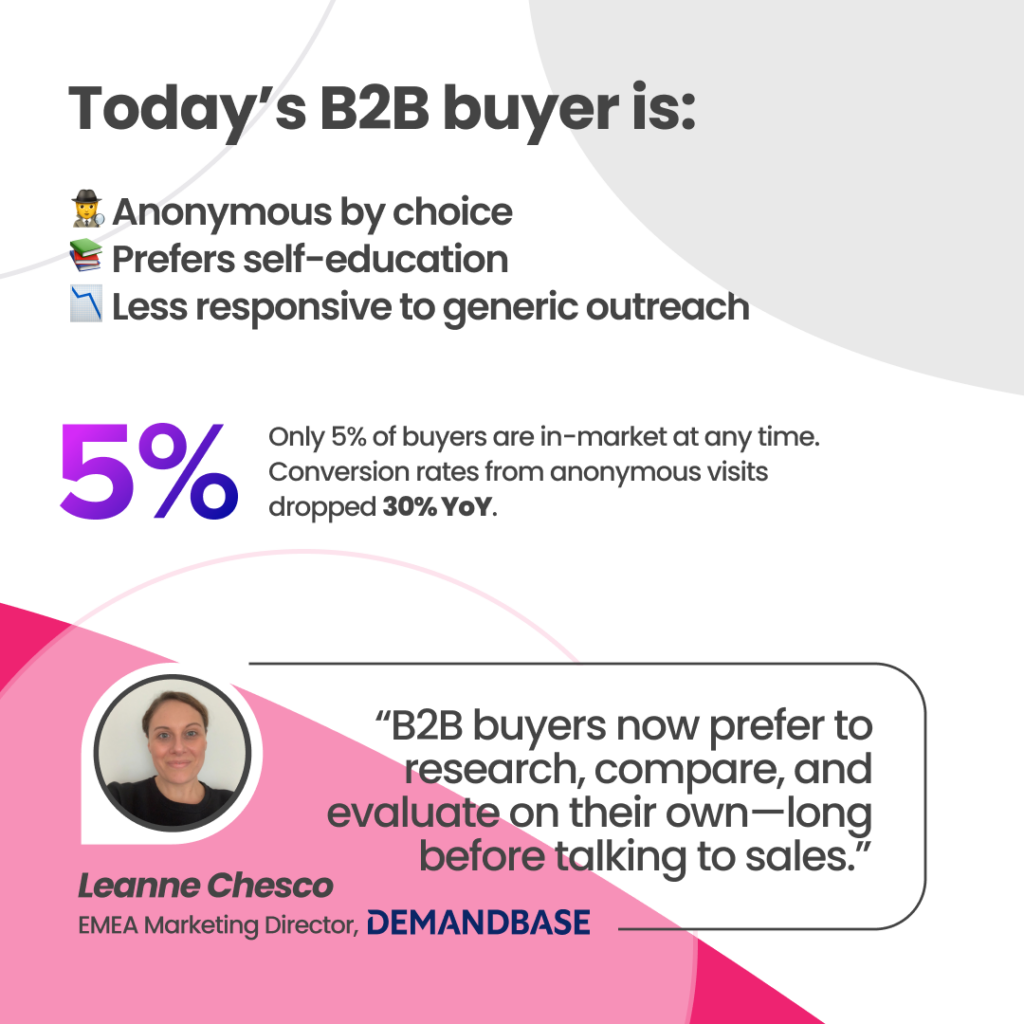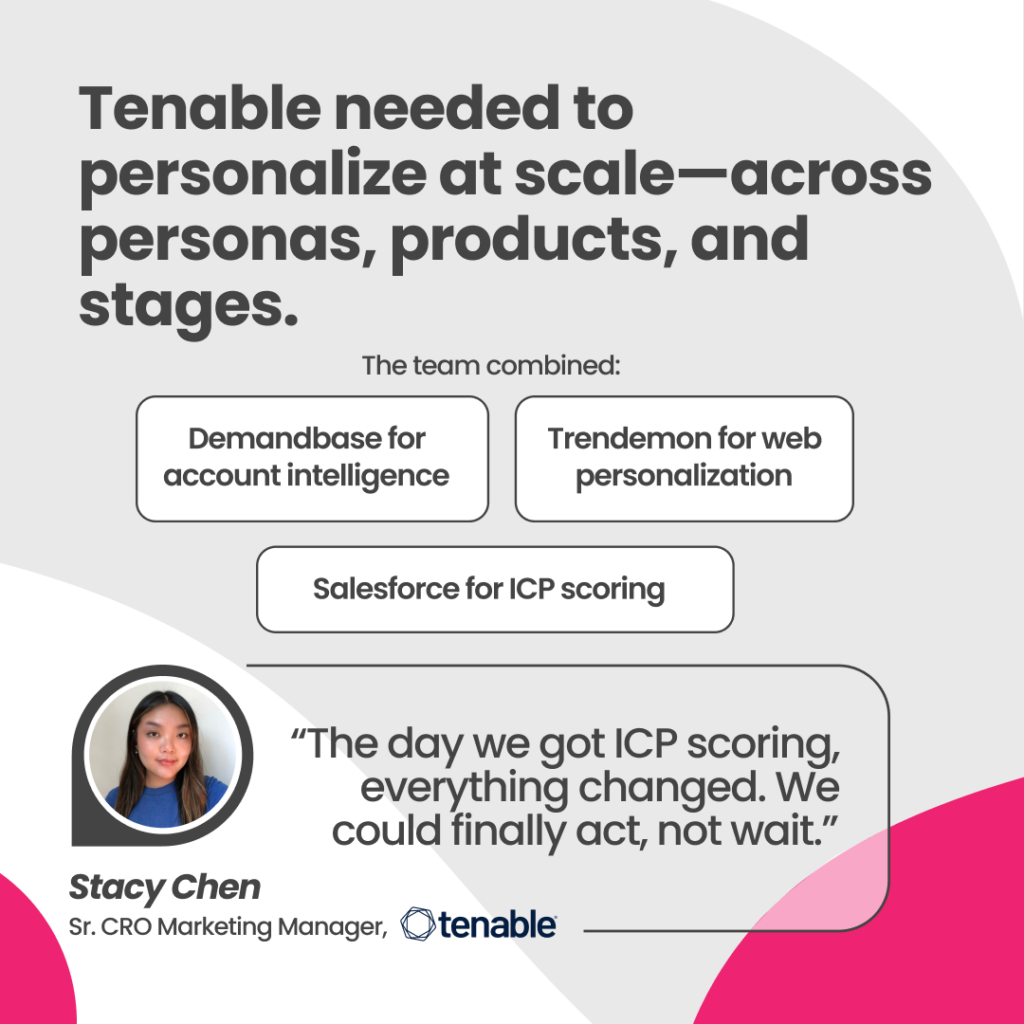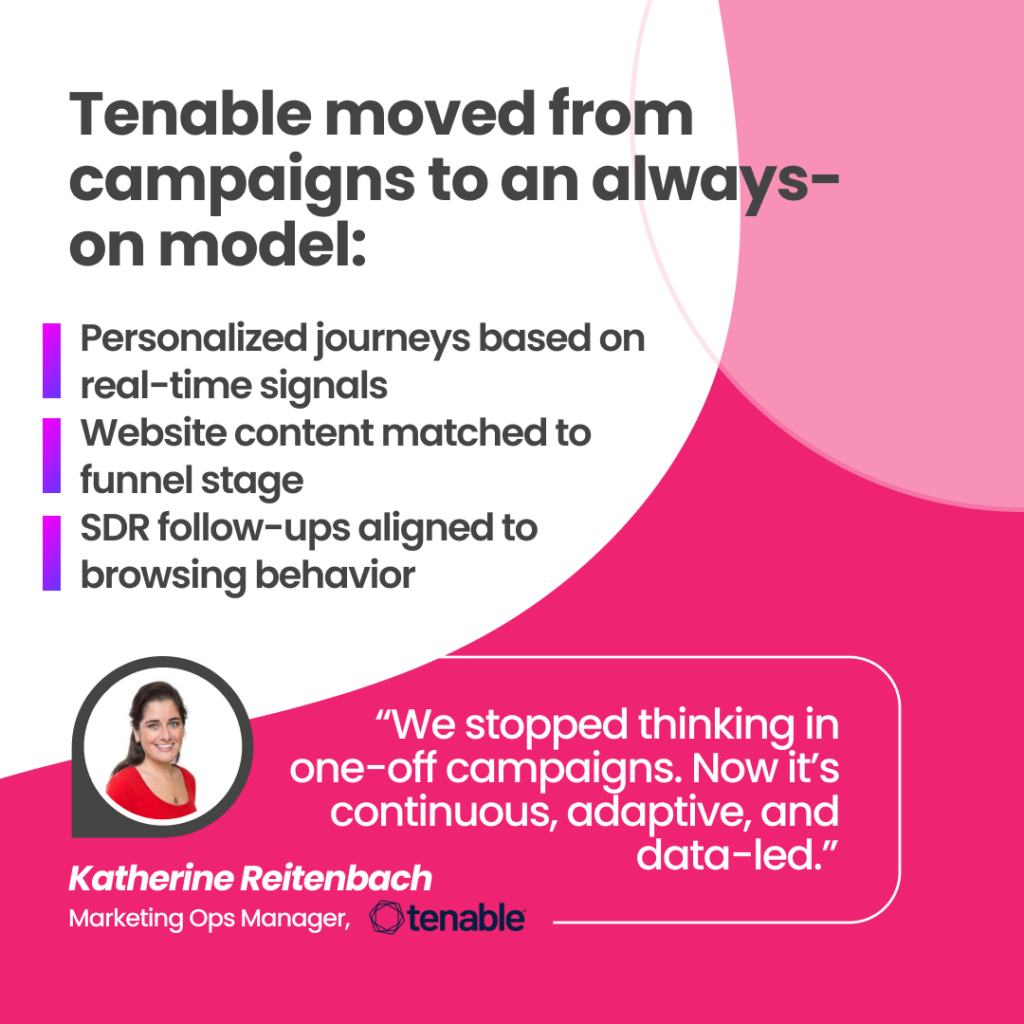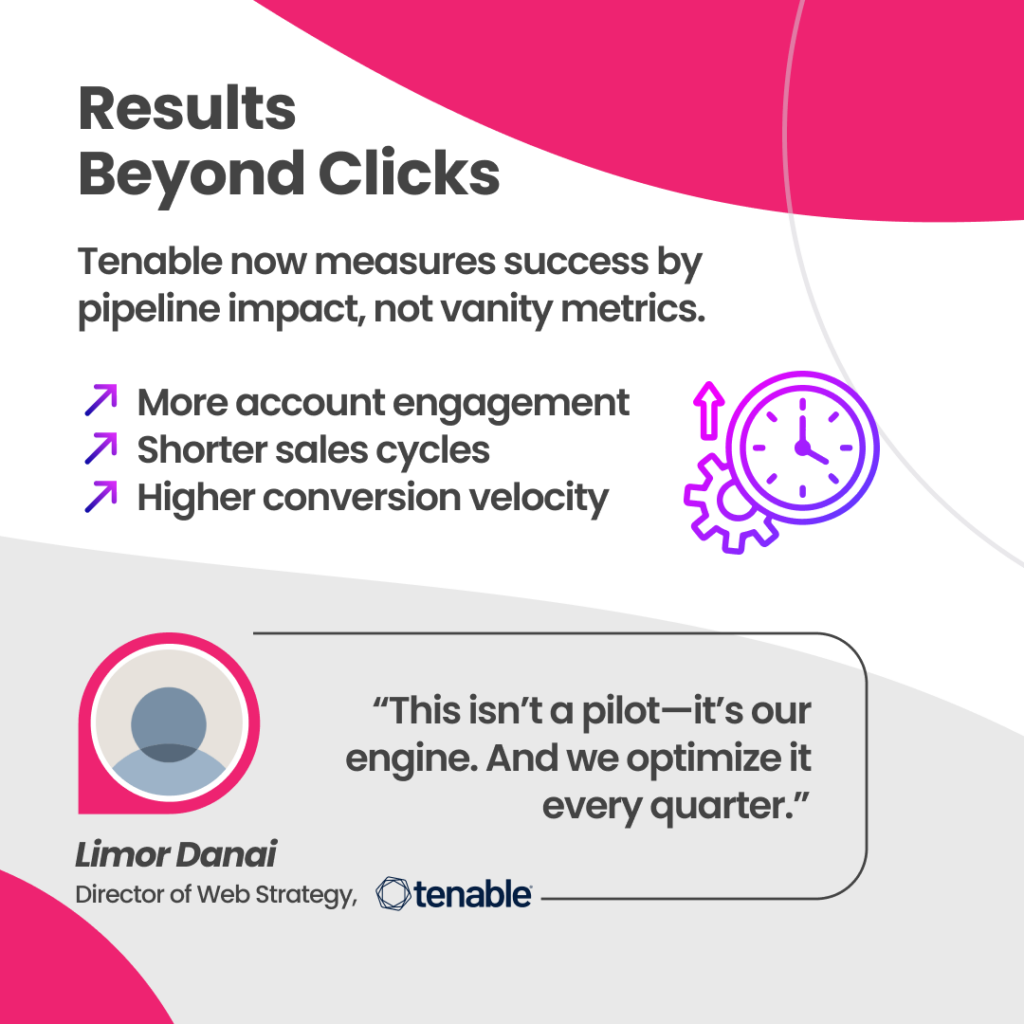Marketing that Converts: How Tenable Uses Demandbase & Trendemon to Drive Conversions

In a recent webinar, Tenable’s marketing team shared how they’re transforming their ABM strategy by combining account intelligence with website personalization to drive measurable business results. Here’s what we learned about their journey from reactive to always-on marketing.
Hard Facts – B2B marketing in 2025 is shaped by a new set of expectations. Buyers prefer self-directed research, CMOs own larger portions of the revenue engine, generic outreach falls flat, and expectations for marketing impact continue to rise—all while budgets shrink. According to recent Gartner study, only 24% of CMOs report having sufficient budget to execute their strategy, forcing teams to prioritize precision in their approach.

For Tenable, the exposure management company that helps organizations close their cybersecurity gaps through their AI-powered Tenable One platform, addressing these challenges meant evolving their account-based marketing strategy into something more sophisticated.
Beyond Traditional ABM: Tenable’s Multi-Dimensional Approach
Tenable has moved beyond traditional account-level targeting to a multi-dimensional strategy that addresses different buyer personas at various funnel stages across multiple products.
Matching content to product interest
“We’ve been experimenting internally with funnel-based content suggestions where previously we’ve just matched content to product interest,” explained Stacy Chen, Senior CRO Marketing Manager at Tenable. “By taking the full account into picture—by looking at not just their web behavior but what they clicked on, the pages they’re consuming, everything they’ve done in their research phase that led up to that first opportunity—we can know exactly what they should be reading and how we can get in front of them even faster.“
This approach helps Tenable’s marketing team stay ahead of buyer needs while simultaneously informing their broader content strategy. As Chen points out, this allows them to identify any potential changes they need to propose, just like updating messaging or addressing any gaps in the funnel of the content so they can continually increase engagement and conversions.
Implementing ICP Scoring
A pivotal moment in Tenable’s ABM evolution came with the introduction of ICP (Ideal Customer Profile) scoring. The team initially had a reactive strategy where they would wait for visitors to respond to a campaign or to visit a deeper web page that was tied to a product , however, soon realized that a reactive strategy was not giving them the numbers they aimed for. Implementing ICP scoring became the first step to moving from a reactive to proactive approach.

With ICP scoring integrated through their Salesforce connection, Tenable’s marketing team was able to implement a more prescriptive approach on the content and offers that they were providing to their customers. Chen explains, “Instead of waiting for them to find out about the solution, we were able to tell them about the solution because we knew that it was a great fit for them and their organization.”
From Campaign-Based to Always-On Marketing
Another significant transformation in Tenable’s strategy has been the shift from campaign-based marketing to an always-on approach, particularly crucial given the complexity of today’s buying committees.
Our research at Trendemon has revealed a 30% decline in conversion rates from anonymous visits at the account level to pipeline opportunities or closed deals when comparing 2024 to 2023. Meanwhile, buying committees have grown to an average of 15 people, yet these committee members are consuming less content individually—creating an urgent need for more efficient buyer engagement.

Switching to Always-On Marketing
Tenable addresses this challenge by ensuring relevant content is continuously available to buyers throughout their journey. “We have set up experiences to make sure that we are ready to greet them when they come,” explained Chen, describing how they respond to the “onslaught of anonymous visitors” that often follow after the first buyer from an organization engages with their website.
Assessing Buyer Interaction
Katherine Reitenbach, Marketing Operations Manager at Tenable, elaborated on how they track engagement patterns: “Looking at an account level, if you look at the history of how they’ve interacted with us, say before they become a customer, you can see the level of detail that they are going into. And that’s where we get an understanding of who the buyer is and where it is in their buyer’s journey.“
Personalizing Content Experiences
These insights enable Tenable to identify different stakeholders within the buying committee based on content consumption patterns. “You can see it progress up the chain in the companies—from the practitioner to the leader to the executive to the C-suite—as the type of content they’re interacting with changes,” Retinbach noted. Meanwhile, with Trendemon’s content autopilot integration, the team can present these accounts with relevant content that is most needed at that time for that person.
Driving Pipeline Impact with Personalized Experiences
While Tenable initially measured success through engagement metrics and conversion rate improvements (which reached up to 7X with Trendemon’s personalization), their focus has shifted to bottom-line impact.
“Marketing now, it’s not just about MQLs anymore,” explained Limor Danai, Director of Web Strategy at Tenable. “It’s about the revenue and the pipeline. We’re looking at pipeline influence, opportunity influence, and things like that.”
This revenue-focused approach aligns with broader industry shifts, where marketing success is increasingly measured by contribution to pipeline and closed revenue rather than engagement metrics alone.

Critical to this success has been the alignment between marketing and sales teams which the Tenable team believes is key to driving a successful ABM motion. “The transparency of that always-on approach has been really helpful when it shifts over to the sales team—that handoff period where we are still going to be nurturing those accounts as they’re having conversations with sales,” explains Reitenbach.
By using shared insights from both Trendemon and Demandbase, Tenable ensures consistent messaging across all touchpoints. “It helps reinforce what they are speaking to because we are all using those same insights. We’re speaking about the same products, we’re speaking about the same objective,” Reitenbach added. “It’s really helped to create a much better experience for our customers.”

Key Takeaways for B2B Marketers
Tenable’s approach offers valuable lessons for B2B marketers looking to enhance their own strategies:
- Move beyond account-level targeting to persona-based engagement that considers funnel stage and product interest
- Shift from reactive to proactive marketing by leveraging ICP scoring and intent signals to identify the right prospects before they self-identify
- Implement an always-on approach that continues to nurture accounts even after sales engagement begins
- Focus on pipeline and revenue impact rather than traditional engagement metrics
- Foster alignment between marketing and sales by ensuring transparency and shared insights
As B2B buying journeys become increasingly complex and anonymous, the ability to identify in-market accounts early, personalize engagement throughout the journey, and measure impact on pipeline will be critical competitive advantages.
Watch the full webinar here.
Ready to transform your website into a personalized experience engine that drives pipeline and revenue? Learn how Trendemon can help you implement an always-on personalization strategy that meets buyers where they are with the right content at the right time.
Schedule a demo today to see how we’re helping companies like Tenable deliver marketing that converts.